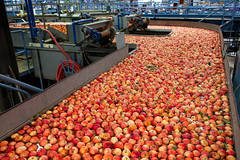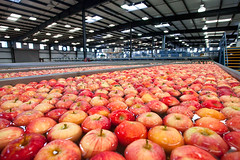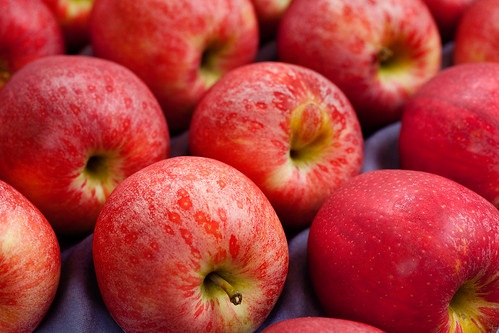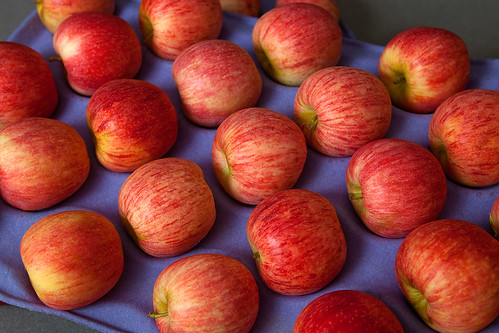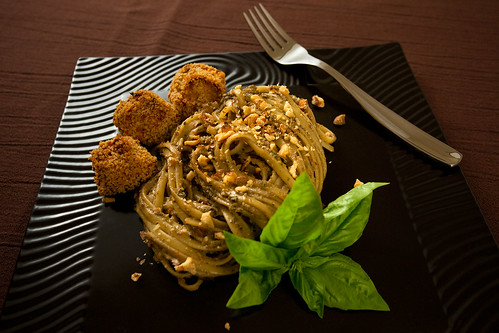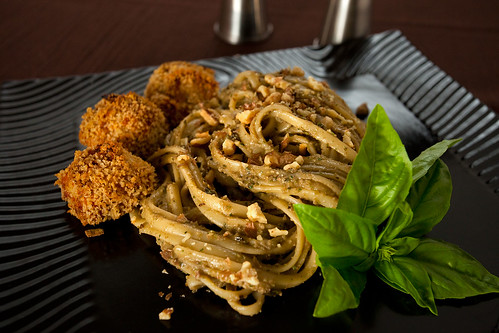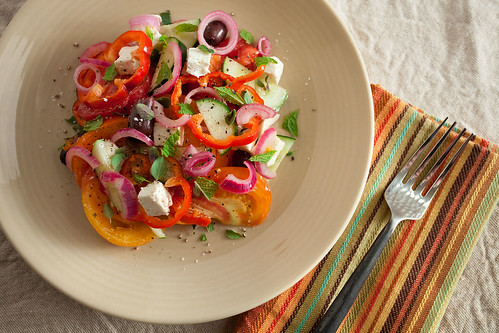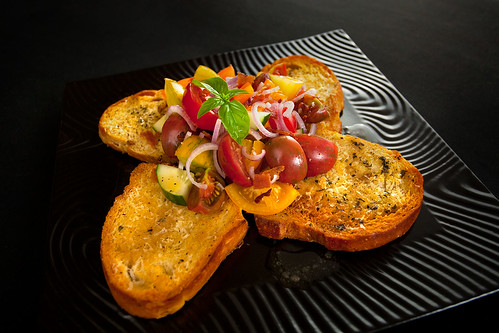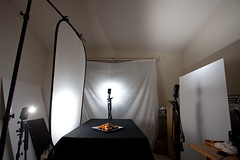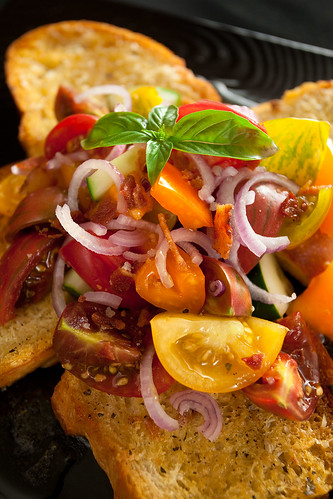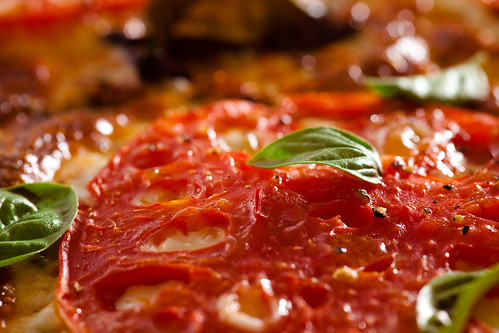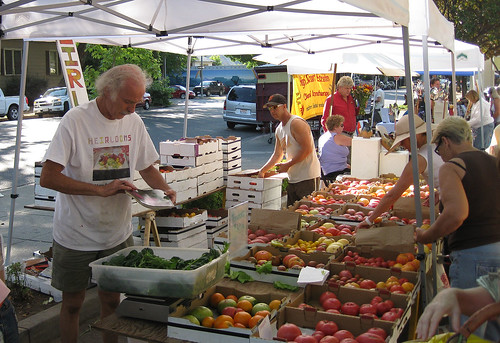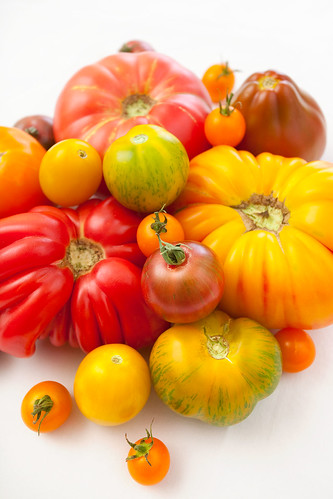We're still having a lot of fun getting to the Chico Farmer's Market every Saturday morning at 8AM. But I'm sure the allure will wear off eventually. But I have to say, we've gotten some delicious stuff there... but it ain't cheap. This weekend, we spent $50 (!!) on heirloom tomatoes, organic peaches, and a grass fed chicken (well, and a bagel too).
Pricey! But worth it. Store bought peaches and tomatoes are nothing but mealy cardboard next to what we get at the farmer's market.

This weekend, we bought a whole variety of heirloom tomatoes from Riparia Farm, located at the south end of Chico. Bruce Balgooyen walked us through the over 40 varieties of heirloom tomatoes he's been growing at Riperia Farm since 1987, but even he couldn't remember every one of the amazing variety of tomatoes at their booth in the farmer's market.
Riperia Farm, located at the south end of Normal Street, specializes in lettuce and heirloom tomatoes, and it was their amazing display of variety upon variety of colorful heirloom tomatoes at their booth at the farmer's market that made me want to highlight them in our blog. Besides, heirloom tomatoes are out of this world flavor-wise!
Lighting and Photography
Before we started butchering these gorgeous tomatoes for various dishes, I wanted to make sure to capture them in their natural beauty, so I set up shop in my studio (which drives me insane to work in if I haven't mentioned it before - it's like working in a telephone booth, it's so small).
Shot 1
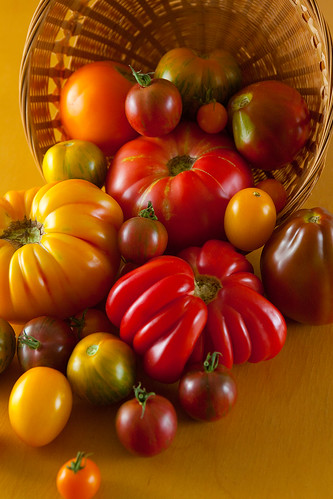
Click on the image to see the varieties

I wanted to capture the tomatoes against different backgrounds to see what effect they would have on the color and texture of the tomatoes, so I started with the bare wood of my table, and a wicker basket to create a sort of cornucopia shot of the tomatoes.
This actually worked out amazingly well. I placed the key light, low, close and to the left, with fills to the right (bounced off foam core at 1/4 power of the key, and a distant front fill, also at a 1/4 power. This third light did very little other than to fill in the shadows deep inside the wicker basket. Overall, I rate this set up a success, though the colors might be seen as a bit warm, even after correction.
Shot 2 - On Black
Next, I tried the tomatoes against a black background.
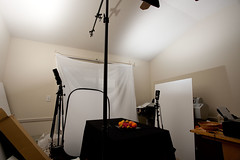
I knew the black would bring out the colors of the tomatoes, so I decided to go with a very diffused, even lighting to eliminate shadows and to pump up the saturation in the image. So, I pointed both flashes at the ceiling, the key light (on the left) 1.5 stops brighter than the fill light (on the right).
I find the soft lighting very pleasing and it does saturate the colors of the tomatoes. I also like how the ripples on the plate come out in this lighting. Overall, I think this was the best set up of the bunch.
Shot 3 - On White
Lastly, I decided to go to the opposite end of the spectrum and put the tomatoes on a white background.
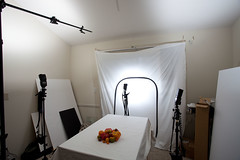
I tried a couple of different plates, but none were really big enough to handle a huge pile of tomatoes. So, they just ended up on a white sheet. The lighting was basically the same as for the previous shot, but I added a third flash, bounced off a reflector, toward the rear to give me a little extra sheen off the tomatoes and to blow out the white sheet. Although this shot is OK, if I were to do it over again, I would have gone for more intense shadows by moving the key light down to the level of the tomatoes and shooting it through a reflector, similar to the first shot.
Lessons Learned
- Black backgrounds accentuate the color in food, and as a result soft, shadowless lighting can be effective.
- White backgrounds focus more on the texture of food, and as a result harder lighting with well defined shadows is more effective.
Next week: Panzanella salad made with heirloom tomatoes!

